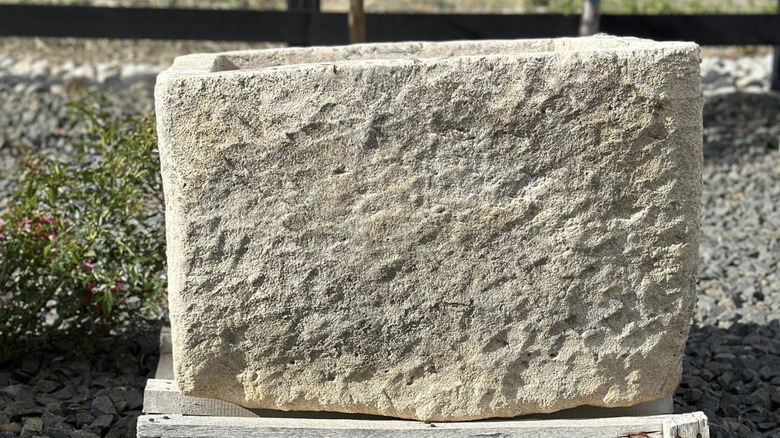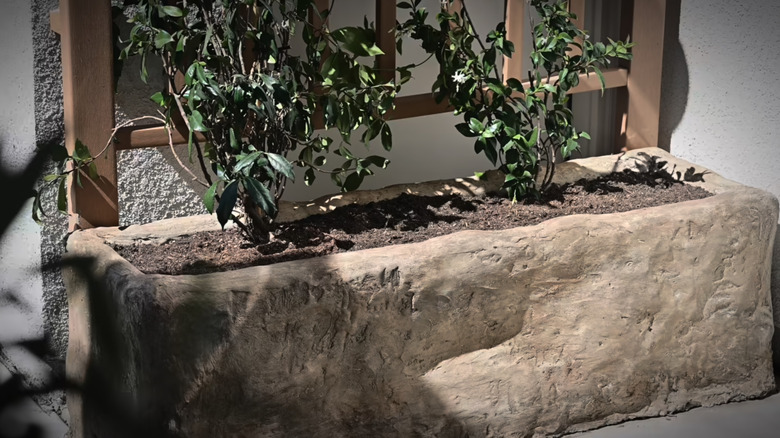How To Make An Affordable And Convincing DIY Limestone Planter
If you love all things vintage and organic when it comes to home decor, then you are probably already obsessed with the aesthetic of limestone planters. They may not be one of the trendiest indoor planters, but these antique and vintage pieces are full of character and history, and the weathering that comes from their age makes them look even more unique. Despite sounding rather rustic, their light, neutral color scheme means they work surprisingly well in a contemporary space. Unfortunately, if your heart is set on having one of these large show-stopping planters in your home, you will probably end up spending thousands of dollars. But, if you want the look on a budget, you can recreate it with a DIY project that is much more affordable. This involves creating a wooden frame, covering it in mortar and a faux limestone finish, and then decorating it to look vintage and weathered.
For this project, you need a frame, cement boards, chicken wire, mortar, faux limestone finish, tools, and some paint or glaze or other materials to get the aged effect. To begin, you can either create a wooden frame for your planter or use another plain planter as a mold or frame. If you build a wooden frame, fill in the sides using cement boards to help make the planter water-resistant. Add chicken wire around the outside of the frame or planter to help the mortar adhere better. Then, mix up your mortar according to its directions and apply it to the frame or planter, making sure to leave bumps, grooves, and other imperfections to make it look realistic.
Getting the antique look on a budget
You can apply the mortar by hand while wearing gloves or by using a trowel, but you will want to make sure it is not too smooth. Once the mortar dries, apply a faux limestone finish, such as Travertino, according to its instructions to get the limestone look. Travertino is a finishing product that mimics the look of limestone, making it perfect for this project. If you cannot find Travertino, you can still texturize and weather the planter to make it look authentic. Brushing with a wire brush, rubbing in dirt and coffee grounds, and strategically applying darker glaze and whitewash glaze can all add to the realism and get it to the correct color. You can also try out some faux painting techniques that will make a big difference.
The overall cost of this project will vary based on the size of the planter you choose to create, but it will be significantly less expensive than the real antiques, especially if you already have basic materials like wood and tools at home. Including a few bags of mortar, chicken wire, cement boards, an antiquing glaze, and a limewash glaze, you could complete the project for around $100 dollars rather than buying an authentic limestone planter for thousands. Even if you add in a large planter as a mold, you will be looking at about $50 more, which will still leave you plenty of money to buy the best indoor plants to use to fill out the space in a larger planter to complete the look.

